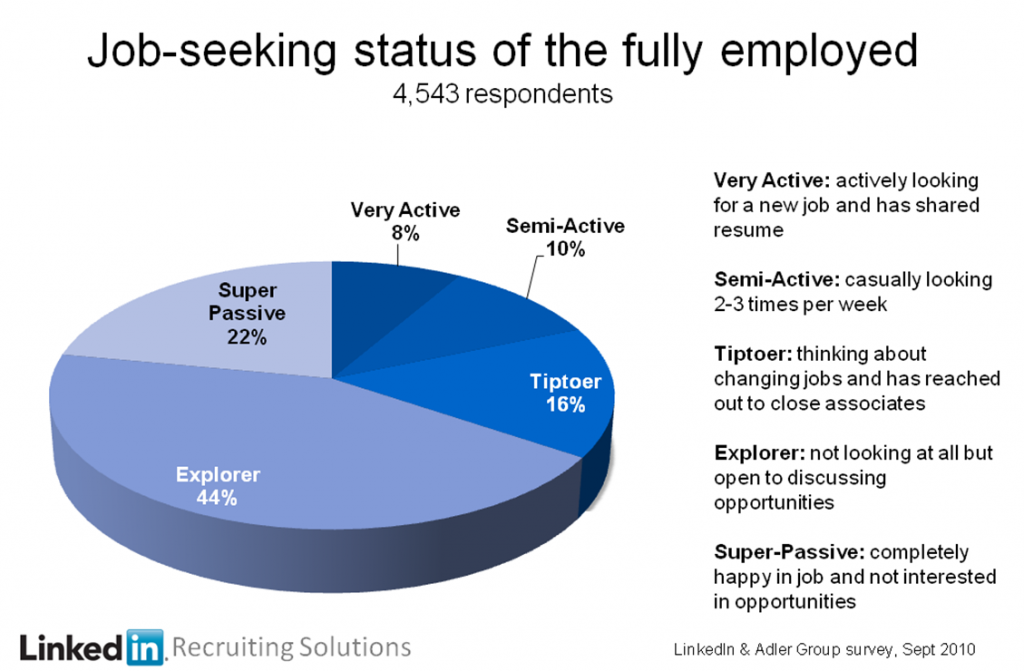Is This Next Adler Prediction as Far Off as His Last Few?
I predict that the market is finally heating up. Of course, I’ve been wrong for the past few years, so you might want to take the next few ideas on how to get ready for 2011 with a grain of salt. Or not.
The market for top talent is definitely heating up and you need to take some serious steps to stay on top of your company’s recruiting activities. In five informal surveys I’ve done in the last 15 days, three out four recruiters (sample of 1000) suggest that for the professional worker, 2011 will represent the tipping for significant job growth, with 2012 being a banner year. At last.
Of course, all of this presumes that our political leaders don’t mess it up, which is a 50/50 proposition at best. However, assuming they’ll get it right, here’s what I see as some emerging trends that you need to consider as you get ready for the new year and beyond. These are based on a recent comprehensive US survey I conducted with LinkedIn this past quarter. In fact, here’s a link to the whitepaper that we just released with all the nitty gritty details on what over 5500 professionals think when it comes to job-seeking.
Adler’s Hiring Predictions for 2011 and 2012
1. Recruiting leaders will be staying up at night, worrying about what they need to do first.
2. Voluntary turnover will increase. In the LinkedIn survey cited above, 78% of fully-employed professionals said they were either open to accept a call from a recruiter or were looking in some way for another job. There is a great deal of dissatisfaction in the American workforce, even among those with jobs, and as green hiring shoots emerge, expect turnover to surge. This will initially create a lot of churn with people switching seats in the hope the grass is greener. While it won’t do a lot for overall employment it will stretch existing corporate recruiting department resources. So you need to plan for this and get ready. This will at least give you a few hours of sleep and a significant edge over the competition.
3. You’ll need to be a whole lot more proactive to get the best talent. A little more color on that 78% stat: only 18% of fully-employed respondents said they’re actively seeking a new job by checking job boards and the like. A whopping 60% are either starting to talk to close associates in confidence (16%) or willing to consider the right opportunity if a recruiter reaches out to pitch them on it (44%). That 60% won’t be coming to you; you have to go out and find them.
4. Using job descriptions for your ad copy will continue to be a waste of time. You won’t find these people using boring job descriptions on major boards. Niche boards will work if you combine them with compelling career focused messages. It was clear from the survey that the best people, while open to explore different positions, they were, by and large looking for career moves, not lateral transfers. So if your postings describe lateral transfers you’ll only attract a very small subset of the 78% of the fully-employed professional market.
5. You need to be found easily. While 18% of the fully employed were somewhat active in their search for a new job, this is mainly through niche boards, aggregators and search engines. So if your postings aren’t quickly found you’ll lose out on finding these people. Why not Google your job using the title, the word “jobs” and the city to check how well you’re doing on this front? Do not include your company name in the Google search. If your ad isn’t on the first page or the first page of the career site that is on the first page, you have some work to do.
6. Farming will not yield the types of people you’ll be seeking in the future. Most of those who said they are actively looking in the survey had only 2-3 years of tenure with their current company and most were more junior level consisting of light managers and staff. On one level this means that using any type of job board to find people means you’re targeting those prone to turnover. On another level it means you’re unlikely to find senior managers and executives this way. This suggests that you’ll need to be more aggressive targeting passive candidates and building corporate recruiters who are more hunters than farmers.
The whitepaper provides more insight and advice on how to get ready for 2011 and 2012. One thing is sure: you can’t do what you’ve been doing these past few years if you want to hire top talent. While you might lose some sleep getting ready, you’ll feel a whole lot better in the morning knowing you’re on the right path.
Topics: Data insights
Related articles



